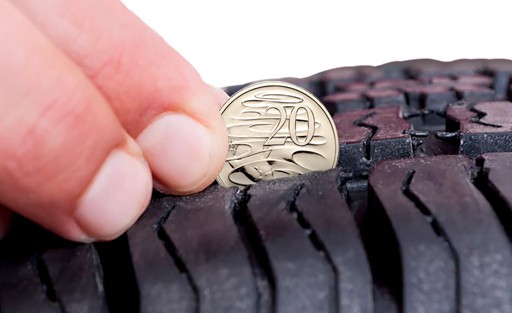
What is Hydroplaning And What Can You Do To Prevent It?
Hydroplaning is one of the most dangerous driving situations you can encounter. It's also surprisingly common. Thus, knowing what hydroplaning is and how to prevent it is essential. Let’s dive into it.
What is Hydroplaning?
Hydroplaning occurs when a thin film of water forms a barrier between the road and your tyre, preventing the tread from gripping it effectively.
Your tyre loses traction and you can slip and spin dangerously out of control.
It usually takes place when driving through roads with standing water due to rain or other reasons. That is why when the road is wet; it tends to be “slippery.”
Why is Hydroplaning dangerous?
Hydroplaning decreases the grip between your tires and the road. With less grip, you will lose steering control, either spinning or sliding that can result in an accident.
What causes hydroplaning:
Wet conditions/Water depth

Wet roads increase your chances of aquaplaning exponentially, especially when water on road surfaces exceeds 1/10th of an inch deep.
Tread Depth and Design
Tyre tread patterns are usually designed to have the optimal combination of grooves and blocks to quickly drain water out from its surface. If your tyre tread is worn down, your tyre will stay wet longer, and the higher the chances of hydroplaning.
Vehicle speed
Your tyre tread needs time to void water. The faster you go, the less time you have to drain water out. Hydroplaning occurs even at speeds as low as 25 mph, so when the road is wet, slow down.
5 Ways To Avoid Hydroplaning
Driving in the rain is challenging. Your vision is hampered, traffic backs up, or worse, your vehicle can hydroplane. Fortunately, there are ways to prevent it:
1. Rotate your tyres regularly and replace them when necessary.
This will prevent uneven tread wear which could indirectly cause hydroplaning if your tyre's tread can no longer flush water out effectively.
2. Ensure your tyres are properly inflated and that you have the correct tire pressure.
Over and underinflated tyres mean your tyre's contact patch is not touching the road at the optimal level as it would on a properly inflated tyre. This increases your risk of hydroplaning.

3. Check that you have the proper tire tread depth. Use the coin test!
As we mentioned earlier, the less tyre tread, the higher the chances of hydroplaning. Make sure your tyre tread is way above the legal limit of 1.5 mm for a safer ride all around.
4. Stay away from the side of the road where water tends to accumulate.
Avoid big puddles of standing water that tend to pool on the left or right side of the road. As much as possible, stick to the dry, paved sections to stay safe.
5. Turn off your cruise control to stay aware of road conditions.
You need to be 100% focused on the road when driving in the rain. Switching to manual control will help you stay aware of the road conditions.

What To Do When Your Car Is Hydroplaning?
Sometimes, even when you take every precautionary measure, hydroplaning will occur no matter what. If your vehicle hydroplanes, the following steps will get you to safety:
-
Don't panic.

Stay calm until you regain traction. Be ready to ride it out because sometimes, that's all you can do until your car moves into a dry spot on the road.
- Don't slam on the brakes.

Ease off the accelerator, pump the brakes slowly vs braking hard until you get control of your car.
-
Slowly steer into your slide.

When you feel your car sliding, don't turn your steering wheel in the opposite direction. For example, you start to slide to the left, don't turn your steering wheel to the right in an attempt to compensate for the slide. When your car starts to skid, turn your steering wheel into the same direction of your skid, while slowly pumping the brakes to regain control.
Choosing Proper Tyres
Hydroplaning is a major safety concern, particularly within the tyre industry.
Tyre manufacturers and their engineers continue to experiment with various materials and tread pattern designs in their search for a way to permanently stop it from ever happening again.
Fortunately, most tyres are equipped with hydroplane prevention features, armed with grooves and sipes that effectively expel water from the surface while keeping you moving in a straight line.
But the best tyre to resist hydroplaning is one with proper and adequate tread depth - and not one that is almost worn out.
Key Takeaways
Hydroplaning is a significant safety concern for vehicles and it can be challenging for drivers to avoid. So make sure your tyres are properly maintained, and if you need a new set of tyres, choose them carefully.
Tyroola has a wide range of high quality tyres for all your driving needs. Click here.









